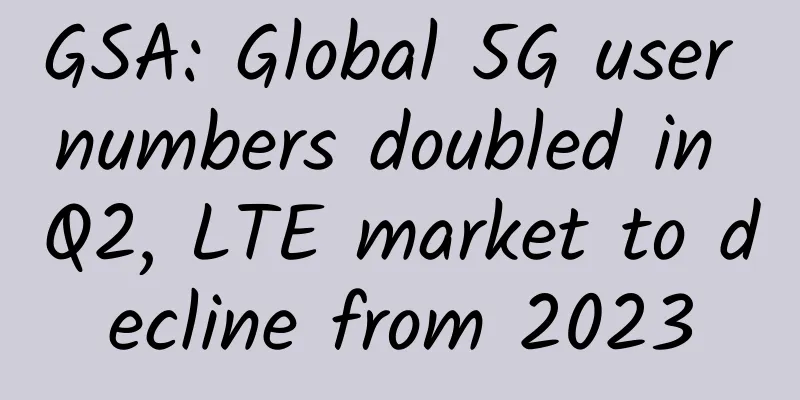How big data empowers 5G value operation and maintenance

The background and significance of data empowering 5GEntering the 5G+AICDE era, communication operators have higher demands on how to make full use of network resources and exert network efficiency, including the use of driving means for digital transformation, setting goals for upgrading the level of autonomous driving networks, etc. The overall expectation is to achieve the goal of value operation and maintenance based on the principle of reducing costs and increasing efficiency. In the current digital environment, all measures to achieve the goal are based on data. The objective situation of the operator's network is also reflected by the most basic network data and various business data carried in the network. Therefore, network and business data, as the "energy gold mine" exclusively controlled by operators, have become the key force to enable the value operation and maintenance of 5G networks.
The value enhancement from "large amounts of data" analysis to "big data" analysisThe large amount of data held by operators supports daily network performance monitoring, business development and other operation and maintenance operations, such as network coverage rendering visualization, registration success rate monitoring, video service traffic user number development analysis, etc. These capabilities are the basic value support that can be achieved on the premise of having "large amounts of data". For operators, in addition to leveraging the basic value of data, high-level demands include deep insight into the traffic distribution in the network pipeline to carry out targeted operations, end-to-end analysis of the network/business to carry out operation and maintenance from a global perspective, building network/user portraits to explore high-potential areas and users, and using historical data and adding AI elements to analyze and predict future trends. Bringing high value injection to operators by meeting high-level demands is an important issue that "big data" analysis needs to face, and only on this basis can the "energy" role of data be fully utilized. Big data’s differentiated capabilities and support for value-added operationsBased on decades of practical experience of ZTE's VMAX intelligent big data platform, we can summarize and refine five differentiated capability sets of big data in the communications field, namely data production capability, data connectivity capability, data adjudication capability, data monetization capability and data prediction capability. (1) Data production capabilityProducing data is the beginning of operation and maintenance. "Device-Pipe-Cloud" is a conceptual model that originated in the mobile Internet era and is the main line of strategic investment for operators. The diverse access terminals, 5G communication network pipelines and Internet cloud in the 5G network are the most basic connection components, but they also contain bottomless data value. Traffic analysis, translation and insight in each link of terminals, wireless networks, core networks, bearer networks and Internet SPs, giving actual meaning to traffic numbers, are necessary means of producing data and the only way to accumulate the most original data. ZTE's VMAX intelligent big data platform, based on the operator's unified DPI collection and analysis specifications, deeply analyzes the control plane and user plane traffic data in the network pipeline, forms XDR call records, and gives practical meaning to the traffic data. On the terminal side, the access to some terminal SDK data enriches the terminal data source that can be used for joint analysis. In China Mobile Group's 5G DPI bidding, VMAX DPI occupied a 70% share in the construction of DPI data collection projects in more than 20 provinces across the country. With more than 15,000 business identification capabilities, it occupies a leading position in the DPI industry and supports a variety of business types in the 5G era, such as payment, instant messaging, short video, VR/AR, cloud games, and other business development analysis and business quality analysis. With the ability to identify encrypted services in the network that exceed the industry average of 10%, it supports HTTPS business identification and has a more thorough insight into network traffic. Relying on the market share of data collection and the leading ability of business identification, the VMAX intelligent big data platform has a strong data production capacity, which brings infinite possibilities for the application value of data. (2) Data connectivityData connectivity can eliminate data silos and is also a prerequisite for achieving end-to-end service integration in the data dimension. End-to-end operation and maintenance is a key capability that operators have been paying attention to for a long time, because end-to-end is a basic way to see problems clearly from a global perspective. End-to-end is relative. In general, for operator network operation and maintenance, a global analysis of the terminal-radio-bearer-core network-Internet SP link can basically be considered to have completed the main end-to-end analysis. Data connectivity uses the terminal identifier (such as IMEI, IMSI, UE IP, etc.) as the connection point on the terminal-radio sublink; the base station equipment network element identifier (such as eNB IP, gNB IP, etc.) as the connection point on the radio-bearer sublink; the core network equipment network element identifier (such as UPF ID, AMF ID, MME ID, etc.) as the connection point on the bearer-core network sublink; and the Internet SP identifier (such as DNS IP, destination Server IP, etc.) as the connection point on the core network-Internet SP sublink. The mastery of data at these connection points generally ensures the end-to-end data integration of big data professionals, and prepares data for the next step of global operation and maintenance analysis. At the same time, the data involved in these connection points not only crosses different professional fields, but may even be data connectivity between different manufacturers, thus also promoting the key differentiated operation and maintenance capabilities of big data products that are different from products in other professional fields. The demand for end-to-end integration is extremely obvious and rigid in some typical application scenarios, such as EPS FB voice delay and quality analysis and user complaint analysis. EPS FB voice delay and quality analysis involves five domains, 5GC, EPC, IMS, NR, and LTE, and the connectivity of about 20+ interfaces. It is an end-to-end analysis demand that cannot be completed in a certain professional field. In the 5G SA network operation and maintenance task of a certain operator, the VMAX intelligent big data platform connects the S1-MME interface XDR data of manufacturer X and the Mw interface XDR data of manufacturer Y based on DPI data, integrates the entire process of EPS FB business, delimits the problems in various professional fields involved in the process and gives preliminary root causes, helping the operator to increase the EPS FallBack success rate to more than 98% and shorten the call delay to less than 4 seconds. User complaint analysis is a typical capability that operators pay attention to. In a certain operator project practice, it shows that the one-click complaint analysis function of the VMAX platform helps to delimit and locate problems, and the processing efficiency is increased by more than 3 times; the platform's automatic delimitation and positioning results are compared with the actual results, and the accuracy rate reaches 80%. (3) Data adjudication capabilitiesManagement guru Drucker once said, "Without measurement, there is no management," which illustrates the importance of measurement. Numbers are the prerequisite for measuring things, the yardstick for judging the quality of things, and the basis for measuring the management and optimization of things. The premise of digitalization is that there needs to be data support. Instantiated in the field of operation and maintenance, user perception is an abstract and comprehensive concept and topic that operators have long been concerned about. Only by measuring perception through big data can we make the prerequisite preparation for the improvement of perception. The evaluation of user perception combines the experience of users using different services. It is necessary to complete the modeling process of classification and effectiveness screening, weight setting, and good and bad threshold definition of KPIs and KQIs that affect perception in order to objectively score and evaluate perception. This requires the support of indicator data and distribution data of different business categories. Therefore, the measurement and improvement of perception is an important scenario that reflects the ability of data judgment. Based on VMAX DPI data, KPI and KQI are selected and weighted for web browsing service perception, video service perception, game service perception, instant messaging service perception and voice service perception, and poor quality threshold and good quality threshold are learned based on the indicator distribution of the existing network, giving a comprehensive perception score, which can evaluate the perception score of specific business categories or APPs, and can also evaluate and score by business, user and regional dimensions, making big data fully play the role of referee and providing a powerful method for value operation and maintenance. The implementation effect of a certain operator project shows that more than 40% of perception problems are identified and dealt with in advance before the obvious performance of KPI indicator degradation. (4) Data monetization capabilitiesData asset monetization is the ultimate form of business model. Using big data, users and networks can be fully profiled. Application scenarios include precision marketing for different types of users, mining high-value users and increasing ARPU, as well as precise network construction planning for valuable areas, saving operators' network construction investment while ensuring coverage. VMAX analyzes the user's video viewing preferences, user attributes, user traffic packages and other business behaviors through traffic analysis and labeling, so as to tailor traffic and membership packages and accurately push them to reach them. In a certain operator project practice, one month after the rights push function was launched, a total of more than 225,000 users were successfully converted, which is 1.7 times the number of converted users compared with traditional non-big data marketing methods. (5) Data prediction capabilitiesThe most important feature of big data is that it can make appropriate predictions about the future based on historical data. For communication networks, the current status of capacity utilization and development foresight are indicators of whether network resources are sufficient and are important issues for operators to pay attention to. In a project practice of a certain operator, based on feature extraction and modeling of the historical development laws of wireless data (such as PRB, traffic, and number of users), a regression algorithm is used to predict the peak traffic, peak number of users, and peak PRB in a certain period in the future. The predicted MAPE (mean absolute percentage error) is less than 12%, which is at a relatively high level in the current industry. The prediction results effectively support the decision-making recommendations for the operator's capacity planning. Big data is evolving in support ofCHBN's all-round operational supportWith the strong evolution requirements of network digitalization, operators' planning for network management big data systems has gradually tended to decouple architecture, share capabilities, unify data, and empower AI. The data managed by the big data platform includes data from multiple market areas such as CHBN (mobile market, home market, government and enterprise market, and emerging markets). The five major capabilities of big data, namely production, connectivity, adjudication, realization, and prediction, will play an irreplaceable strategic role in both the supported areas (such as the mobile market and the home market) and the areas that will be deeply supported in the future (such as the vertical industry market and emerging markets). Support for cloud-network integrationVirtualization and cloudification are the characteristics of the 5G era. The technical empowerment brought by NFV/SDN has brought advantages such as high resource utilization, high capability coordination, and convenient on-demand customization to 5G networks, but it has also brought complexity to operation and maintenance under cloud-network integration. Based on big data technology, 5G networks and Internet clouds are ready to go in terms of business continuity assurance, slice perception assurance, and capacity efficiency and benefit management with the above five capabilities. Support for network intelligence improvementGlobal operators and standardization organizations have released their visions and goals for the evolution direction and promotion steps of network intelligence. China Mobile has proposed the concept of autonomous driving network and plans to achieve L4 level of autonomous driving network by 2025. It has also clearly stated that it will achieve data concentration, end-to-end association, self-developed big data analysis applications, and deep mining of data value; Vodafone takes "intelligentization after data integration" as the basic idea, and proposes to add AI capabilities based on existing operation and maintenance functions to transform to unmanned assisted zero-contact network operation and maintenance; China Telecom plans "data integration, self-developed orchestration system", and outputs data from the O-domain data sharing platform to the company's big data lake to support the end-to-end service layer, and then move towards smart operation; China Unicom builds an intelligent network middle platform based on the platform + application architecture, covering the requirements of big data and AI capabilities, and finally quickly supports the development of special applications. It can be seen that the mainstream operators have formed a consensus on the demand level on the idea of "planning and building the ability of network intelligent operation and maintenance based on big data". This fully reflects the supporting significance of the application value of big data to the improvement of network intelligence level, and also reflects the rigid demand of operators for big data to inject value into operation and maintenance. ZTE's VMAX intelligent big data platform continues to inject automation and intelligence into operation and maintenance, manages data in all dimensions of "planning, construction, maintenance, optimization, operation and financing", deeply explores the value of data, creates a digital ecosystem, and accelerates the digitalization process of operators' network operation and maintenance. |
<<: AT&T provides sub-6GHz 5G emergency safety access in 10 cities
>>: Is your network AI as smart as you think?
Recommend
Horizontal comparison of NB-IoT technologies of the three major operators in terms of infrastructure construction, ecosystem construction, application expansion, and tariff competition
In the blink of an eye, we have entered 2018. In ...
Bluetooth, WiFi and Zigbee: Which wireless technology is better?
Wireless technology is all the rage these days! F...
Who will be the Internet of Things "giant"? 2017 World Internet of Things Expo closed
【51CTO.com original article】 On September 13, 201...
Vietnam's three major operators reach 5G RAN equipment sharing agreement
[[404902]] Vietnam’s three largest operators, Vie...
How to improve Wi-Fi performance: Experts talk planning, troubleshooting
Wireless is the technology of choice and the defa...
RAKsmart Los Angeles CU9929 line VPS simple test
Last month, the blog shared that RAKsmart Los Ang...
The soul-searching questions of TCP protocol: strengthening your network foundation
First show the mind map of this article: TCP, as ...
China Unicom successfully led a new project on shared network requirements and architecture based on blockchain in ITU-T
[[388061]] At the ITU-T SG13 plenary meeting held...
How to become a better person? Huawei Elite Competition helps ICT talents break out of their cocoons and become butterflies
[51CTO.com original article] On the last Saturday...
Crisis! Crisis! The epidemic is a “crisis”, 5G is an “opportunity”
A sudden encounter with the pneumonia epidemic re...
WiFi 6 has limited potential without smart management
WiFi 6 is finally making its way into consumers’ ...
Why Wired Ethernet Connections Still Make Sense Today
Ethernet is faster, more reliable, and more secur...
Five firewall configuration mistakes to avoid
A misconfigured firewall can be just as dangerous...
CMIVPS Seattle VPS (AS4837) simple test
We have previously shared information about CMIVP...
The web standard is always MIME version 1.0
Introduction There is no order without rules, and...









